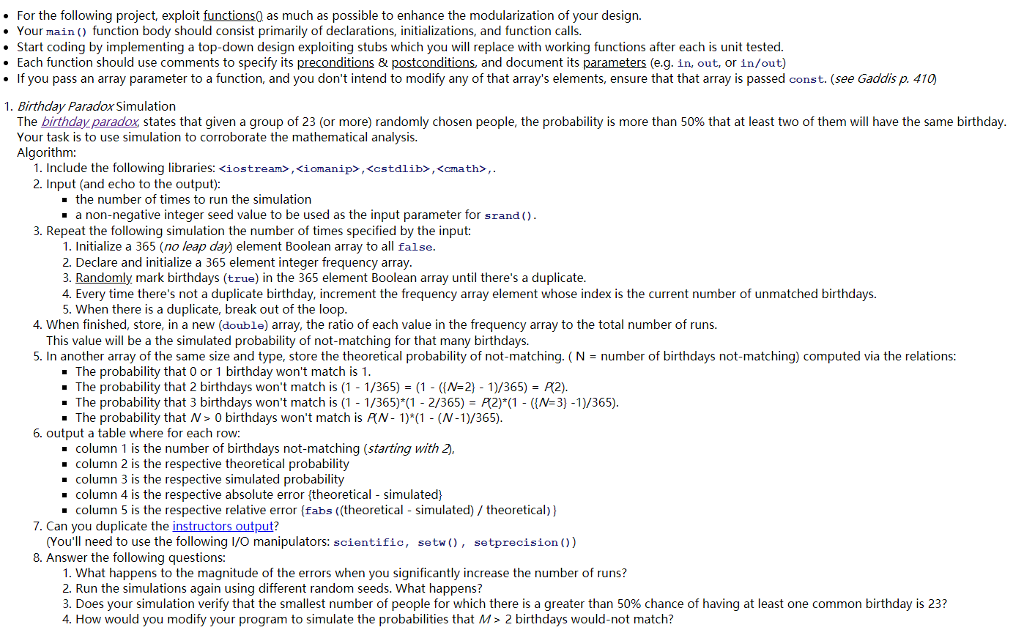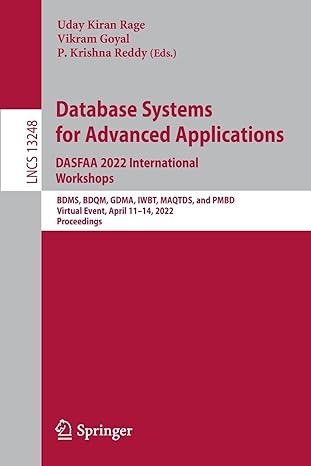Answered step by step
Verified Expert Solution
Question
1 Approved Answer
Please include all step in your code and follow the introductions , THX And this is a C++ problem. For the following project, exploit functions0




Please include all step in your code and follow the introductions , THX
And this is a C++ problem.
For the following project, exploit functions0 as much as possible to enhance the modularization of your design. Your mainfunction body should consist primarily of declarations, initializations, and function calls. . Start coding by implementing a top-down design exploiting stubs which you will replace with working functions after each is unit tested. . Each function should use comments to specify its preconditions & postconditions, and document its parameters (e.g. in, out, or in/out) If you pass an array parameter to a function, and you don't intend to modify any of that array's elements, ensure that that array is passed const. (see Gada sp. 410 1. Birthday Paradox Simulation The Di a A states that given a group of 23 or more randomly chosen people, the probability is more than 50% that at least two of them will have the same birthday Your task is to use simulation to corroborate the mathematical analysis. Algorithm: 1. Include the following libraries:Step by Step Solution
There are 3 Steps involved in it
Step: 1

Get Instant Access to Expert-Tailored Solutions
See step-by-step solutions with expert insights and AI powered tools for academic success
Step: 2

Step: 3

Ace Your Homework with AI
Get the answers you need in no time with our AI-driven, step-by-step assistance
Get Started


